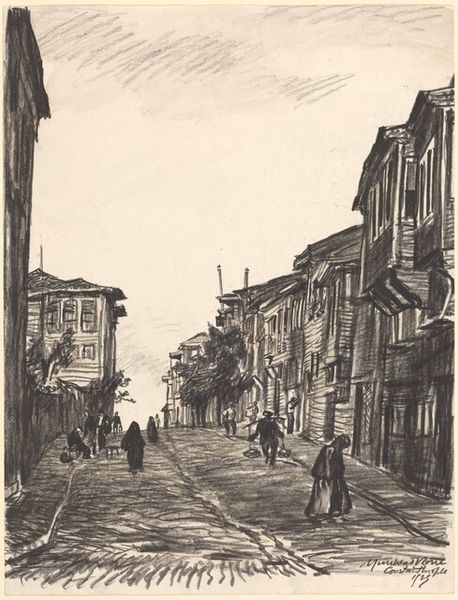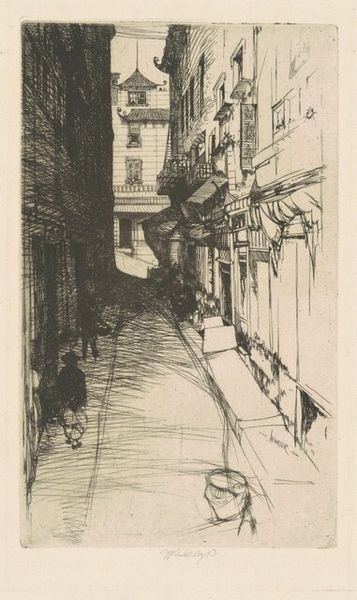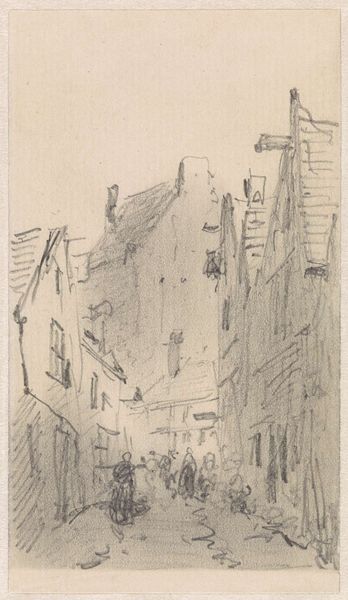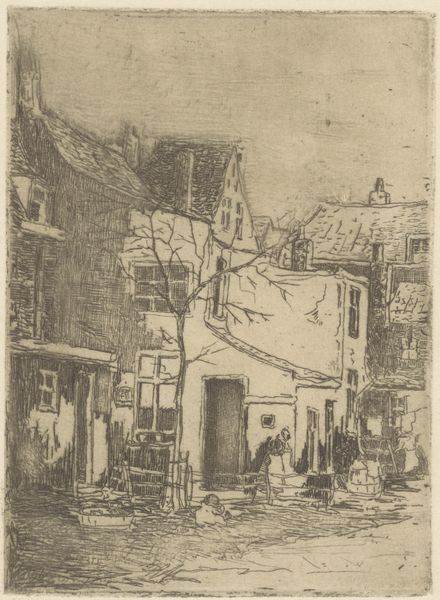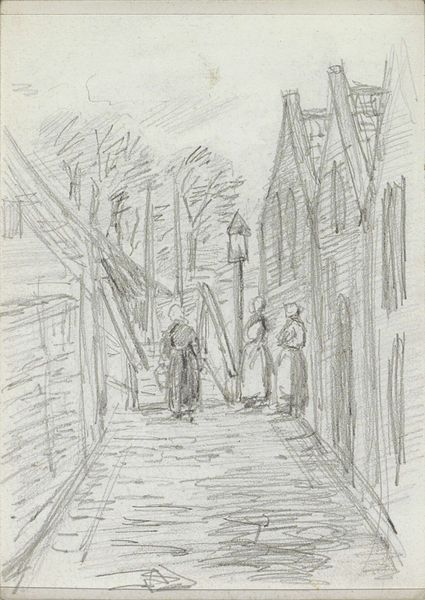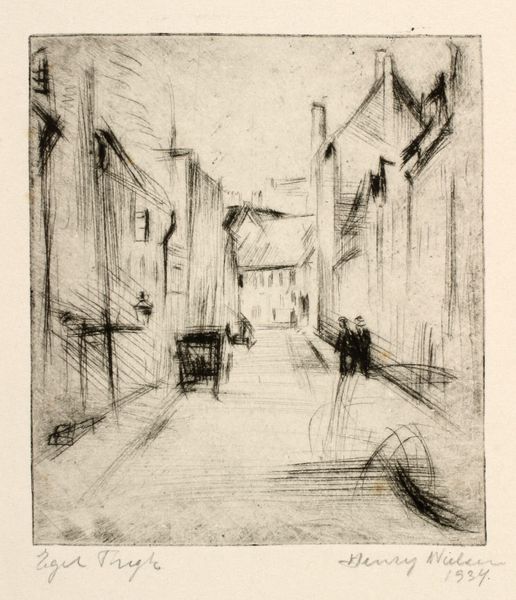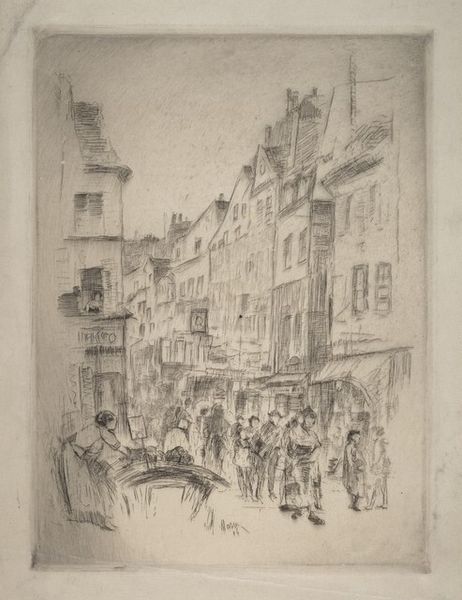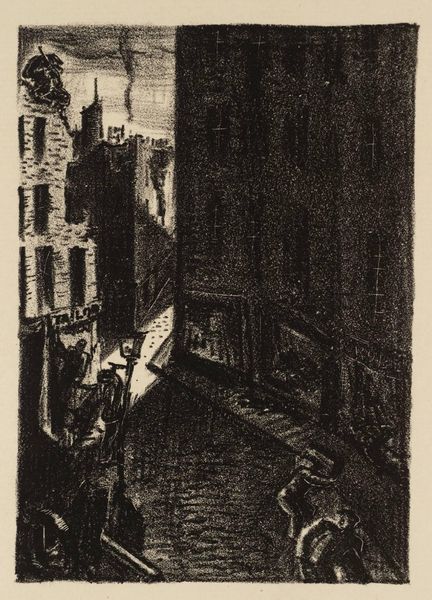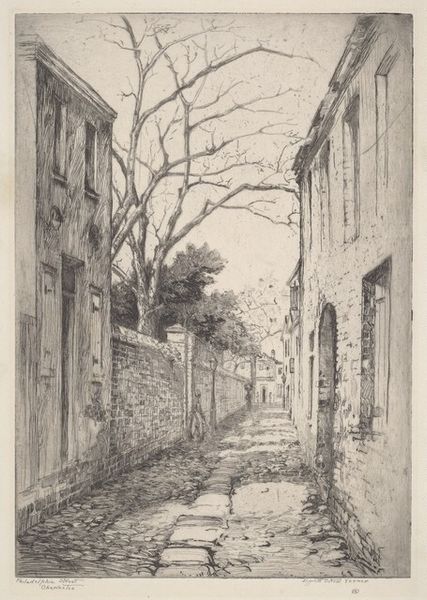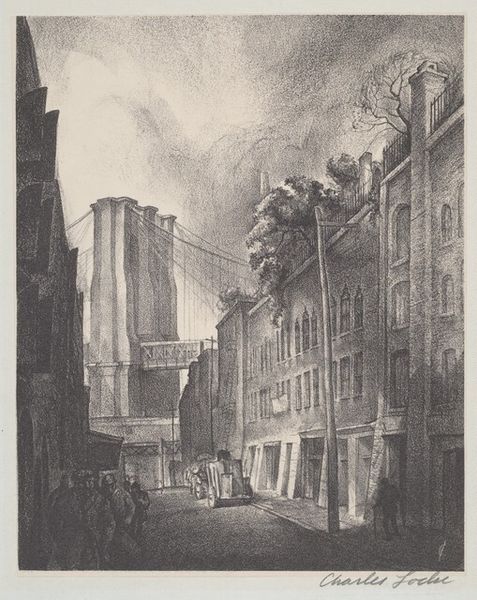
drawing, print, graphite
#
drawing
# print
#
german-expressionism
#
figuration
#
street-photography
#
expressionism
#
line
#
graphite
#
cityscape
Dimensions: overall: 36 x 27.2 cm (14 3/16 x 10 11/16 in.)
Copyright: National Gallery of Art: CC0 1.0
Curator: Let’s consider Rudolf Grossman's "Street Scene," created around 1920. The piece is a drawing, or perhaps a print made to mimic a drawing, using graphite on paper. Editor: What hits me immediately is this eerie, almost desolate feel. The figures seem hunched and anonymous, swallowed up by the harsh angles and long shadows. There’s a vulnerability that gets under my skin, a whisper of urban alienation. Curator: The use of graphite is critical here. It allows for a range of tones, creating both depth and an atmosphere of heavy foreboding. Considering the period—post-World War I Germany—the social and economic anxieties would inevitably influence the artist’s choice of subject and medium. Cheap paper and pencils meant even poverty and chaos could be portrayed in art. Editor: Absolutely. And look at those sketchy, hurried lines – they convey so much emotional weight. It’s as if the very act of drawing becomes a scream. You mentioned poverty... it's evident in their threadbare attire, walking sticks, these subtle indications that everyone’s burdened in Grossman’s image. The way the street rises up as a focal point—so skillfully shaded—seems like some kind of stage set of sadness. Curator: Precisely. There is a relationship of labour and affect. Grossman would have sourced materials locally and made marks efficiently; these visible efforts create that tension you’re sensing, but it is more embedded with a German Expressionist technique. Line, tone, form—all used not for representation but to create heightened emotion. Editor: So the art embodies struggle in every possible way. From the subjects depicted to its own method. It's kind of heartbreaking. The urban backdrop has such great presence, you’re practically breathing in the grime of that street... Curator: I’d agree. The work’s materials are accessible, and its subject universal – a snapshot of urban existence at a time of significant upheaval. And those marks...each one represents a moment of creation and thought for this important artist, Grossman. Editor: Yes, even though it initially strikes me as melancholic, getting into these aspects offers glimmers of humanity within the suffering...a poignant resilience captured with just pencil and paper. It seems that Grossman managed to make something enduring out of this raw moment.
Comments
No comments
Be the first to comment and join the conversation on the ultimate creative platform.
